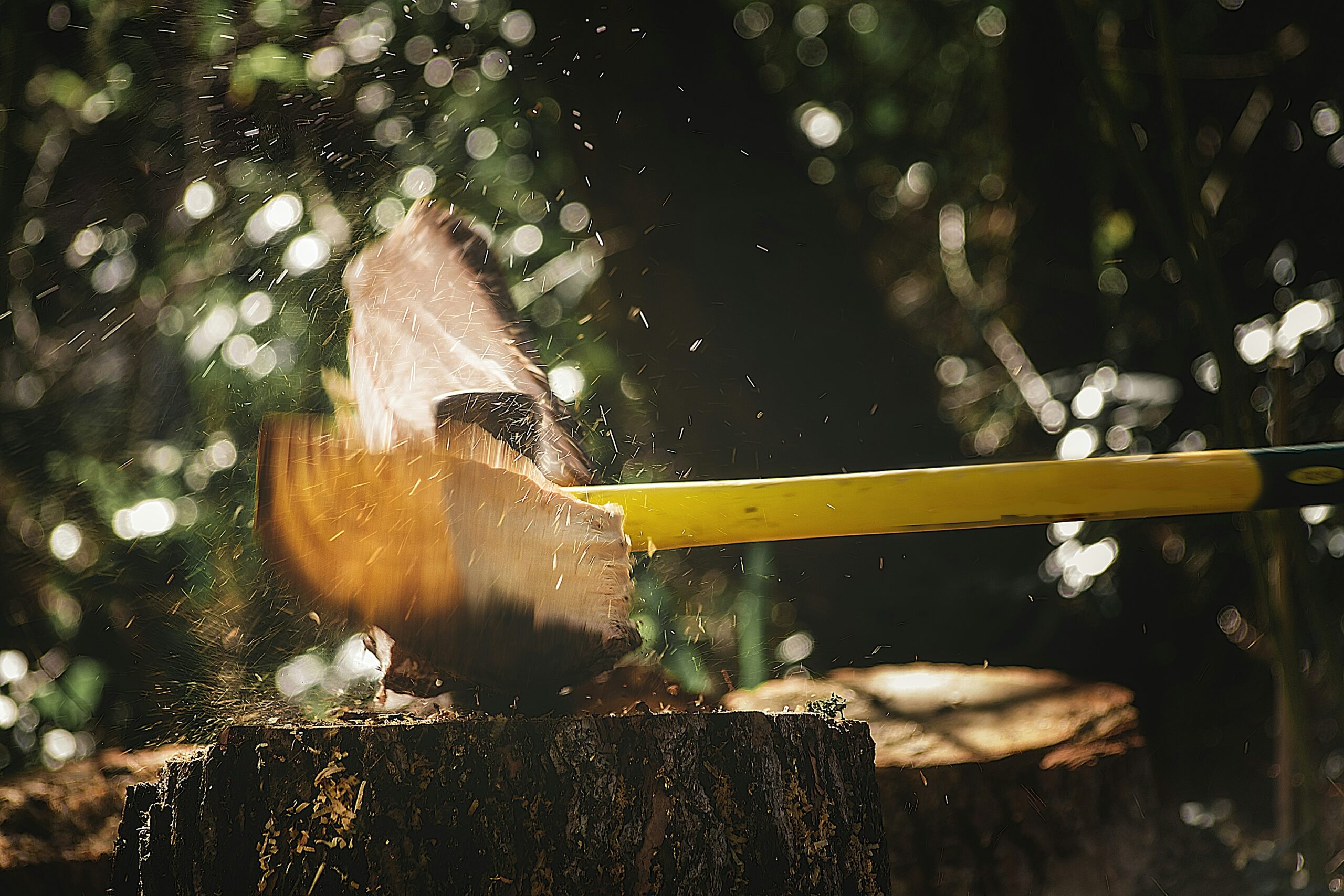Axe throwing has rapidly gained popularity, inspiring many to compete at the highest levels. Are you ready to master axe throwing and elevate your skills for championship success? This guide delves into the fundamentals, advanced techniques, and essential rules to help you thrive in competitions. You’ll also learn how to create a personalized training plan that builds confidence and enhances your performance. If your goal is to turn a passion for axe throwing into a winning edge, this guide is the perfect place to start.
Key Takeaways
- A proper grip is essential for control and accuracy in axe-throwing
- Stance and posture greatly influence throwing stability and performance
- Adjusting throws for different distances improves scoring potential during competitions
- Safety should always be a priority when practicing axe-throwing techniques
- Creating a personalized training plan helps enhance skills and track progress effectively
Understanding the Fundamentals of Axe Throwing

Gripping the hatchet correctly is crucial for maintaining control in axe throwing. Establishing the right stance and posture enhances accuracy, especially during tournament play. Effective throwing techniques are essential for improving performance, and prioritizing safety ensures a secure and enjoyable experience. This section provides practical insights into mastering the fundamentals of axe throwing, helping participants refine their skills and confidence.
Gripping the Axe for Maximum Control
Gripping the axe properly is vital for achieving maximum control during throws in axe throwing. A secure, relaxed grip helps prevent slipping and allows for a more consistent release point. Practicing with the axe until it feels comfortable in hand can significantly improve throwing accuracy and overall performance in competitions.
Establishing the Optimal Stance and Posture
Establishing the optimal stance and posture is crucial for effective axe throwing. A balanced, comfortable position allows throwers to maintain stability and focus. Standing with feet shoulder-width apart and slightly bending the knees can help throwers stay grounded while enabling a smooth and powerful throw toward the target.
Developing Effective Throwing Techniques
Developing effective throwing techniques is essential for anyone looking to excel in axe throwing. A smooth motion, starting from the feet and transferring through the body to the arms, allows for more power and precision. By practicing regularly, throwers can identify their personal rhythm and find the ideal angle for releasing the axe, ultimately leading to improved accuracy and success in competitions.
Ensuring Safety in Every Throw
Ensuring safety in every throw is essential in axe throwing, particularly for those aiming to compete at high levels. Participants should always wear sturdy closed-toe shoes and keep the throwing area clear of spectators to reduce the risk of injury. Practicing proper throwing techniques and remaining aware of their surroundings can greatly enhance safety, allowing throwers to focus on improving their skills without unnecessary distractions.
Mastering Advanced Throwing Techniques

Perfecting one-handed and two-handed throws is essential for versatility in axe throwing. Adjusting throws for various distances helps adapt to different competition scenarios. Controlling spin and axe rotation can significantly enhance accuracy while overcoming common throwing challenges ensures consistent performance. These topics provide practical insights to elevate skills and boost success in axe-throwing competitions.
Perfecting One-Handed and Two-Handed Throws
Perfecting one-handed and two-handed throws is crucial for throwers aiming to excel in axe-throwing competitions. One-handed throws require a tight, controlled grip and a well-timed release, allowing quick, agile movements useful for close targets.
In contrast, two-handed throws emphasize power and stability, benefiting from a strong base and coordinated body motion to achieve greater distance and accuracy. This makes them essential for varying competition setups.
Adjusting Throws for Various Distances
Adjusting throws for various distances is a key skill for winning in axe-throwing competitions. Contestants must understand their throwing mechanics to modify their stance and release angles based on the target’s distance.
For instance, a throw aimed at a shorter distance may require a more upright body position and a quicker release, while longer distances need a more pronounced step and a slower, controlled release to ensure accuracy and power:
Controlling Spin and Axe Rotation
Controlling spin and axe rotation is vital for achieving precision in axe throwing. How the axe is released determines how it spins through the air, which can affect accuracy when it hits the target. Throwers should focus on a smooth release and proper wrist action to maintain a consistent spin and rotation, allowing for better competition performance.
Overcoming Common Throwing Challenges
Overcoming common throwing challenges is essential for success in axe-throwing competitions. Many athletes struggle with consistency in their throws, often caused by improper grip or stance. By paying attention to these elements and practicing regularly, throwers can develop a more reliable technique that enhances their accuracy and performance, ultimately aiding them in their quest for championship success.
Physical and Mental Preparation for Competition

Strength and conditioning exercises help improve physical performance in axe throwing. Mental focus and visualization techniques can enhance concentration during competitions. Managing competition stress is vital for maintaining composure and clear thinking. Building confidence through regular practice develops a thrower’s ability and readiness. Each element plays a crucial role in preparing for championship-level axe throwing.
Strength and Conditioning Exercises
Strength and conditioning exercises are crucial for improving axe throwing performance. This type of training focuses on building core strength, enhancing grip, and increasing overall endurance, which are all essential for executing powerful throws. Simple exercises like planks and wrist curls can be easily integrated into a regular fitness routine to help throwers develop the physical attributes needed to excel in competitions.
Mental Focus and Visualization Techniques
Mental focus and visualization techniques are vital in preparing for axe-throwing competitions. By practicing mental imagery, throwers can picture their throws and successfully hit the target, which helps to build confidence and improve performance. Using visualization allows competitors to mentally rehearse their techniques, reducing anxiety and enhancing clarity during high-pressure situations like world championship events.
Managing Competition Stress
Managing competition stress is essential for success in axe-throwing championships. Competitors often feel pressure that can affect their performance; however, practicing relaxation techniques, such as deep breathing or mindfulness, can help calm nerves. Additionally, creating a pre-competition routine allows throwers to focus their energy and approach each throw confidently and clearly, enhancing their overall game.
Building Confidence Through Practice
Building confidence through practice is essential for anyone aiming to excel in axe throwing and compete at high levels. Regular practice allows throwers to refine their skills, increase muscle memory, and become more comfortable with their throwing techniques. As they consistently hit targets during training, their self-assurance grows, helping to ease nerves in competition situations:
- Practice regularly to improve your skills and technique.
- Focus on achieving consistency during training sessions.
- Use positive reinforcement to build mental strength.
- Engage in practice that simulates competition scenarios.
Navigating Championship Rules and Regulations

Navigating championship rules and regulations is essential for any axe-throwing competitor aiming for success. Understanding scoring systems will help participants maximize their potential points. Meeting equipment standards ensure compliance and safety while embracing sportsmanship and etiquette fosters a positive environment. Additionally, strategizing within competition guidelines can provide a competitive edge. These aspects are crucial for mastering the art of axe throwing.
Understanding Scoring Systems
Understanding scoring systems in axe-throwing competitions is vital for competitors looking to maximize their points. In most tournaments, points are awarded based on where the axe lands on the target, with the bullseye earning the highest points. Familiarizing oneself with the specific scoring rules can help throwers strategize their throws and improve their chances of success during championship events:
Meeting Equipment Standards
Meeting equipment standards is crucial for competitors in axe throwing. Each tournament has specific guidelines regarding the axes used, including their weight and design. Familiarizing oneself with these standards helps ensure compliance and can prevent disqualification, allowing throwers to focus on their performance without any setbacks.
Embracing Sportsmanship and Etiquette
Embracing sportsmanship and etiquette in axe-throwing competitions promotes a positive environment and encourages fair play. Competitors should always respect their opponents, congratulate them after throws, and maintain friendly interactions throughout the event. By fostering good sportsmanship, throwers can build a strong community that values integrity and encourages everyone to perform at their best during the championship.
Strategizing Within the Competition Guidelines
Strategizing within the competition guidelines of axe throwing is essential for achieving success. Competitors must analyze the rules and structure of their events to identify areas where they can maximize their scoring potential. By understanding the nuances of the scoring system and adjusting their techniques accordingly, throwers can enhance their performance and improve their chances of winning.
- Familiarize yourself with specific scoring rules to enhance your strategy.
- Adjust techniques based on the competition format.
- Focus on accuracy by knowing target zones for maximum points.
- Maintain compliance with equipment standards for smooth participation.
- Practice good sportsmanship to promote a respectful environment.
Conclusion
Mastering the art of axe throwing is essential for any competitor aiming to succeed at the World Championship. It combines effective techniques, physical and mental preparation, and an understanding of competition rules to enhance performance.
Throwers can greatly improve their accuracy and consistency by focusing on key aspects such as grip, stance, and adjusting throws for distance. A dedicated approach to practice and strategy ultimately leads to mastery and success in this exciting sport.

